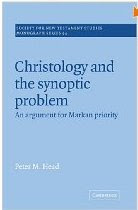Matthew chapter 2 appears to pull proof texts out of the Hebrew Scriptures in an almost random way. However, when it is read in the light of the ancient additions to the story of Balaam, the texts form the structure of a sermon based on Balaam's star. Early Jewish sources allude to a story about Balaam who, in the identity of Laban, tried to kill Rachel's children which included a messianic baby. They were protected in Egypt but after the Exodus Balaam attacked again. Matthew's four quotations are each linked to this story, and a first century Jewish reader would have recognised the story behind these links. The underlying message is that Jesus is the Messiah, and that Herod was like Balaam-Laban, the super-enemy of the Jews who tried to destroy the Messiah.
"Balaam-Laban as the key to the Old Testament quotations in Matthew 2"
Matthew chapter 2 appears to pull proof texts out of the Hebrew Scriptures in an almost random way. However, when it is read in the light of the ancient additions to the story of Balaam, the texts form the structure of a sermon based on Balaam's star. Early Jewish sources allude to a story about Balaam who, in the identity of Laban, tried to kill Rachel's children which included a messianic baby. They were protected in Egypt but after the Exodus Balaam attacked again. Matthew's four quotations are each linked to this story, and a first century Jewish reader would have recognised the story behind these links. The underlying message is that Jesus is the Messiah, and that Herod was like Balaam-Laban, the super-enemy of the Jews who tried to destroy the Messiah.
Subscribe to:
Post Comments (Atom)













No comments:
Post a Comment